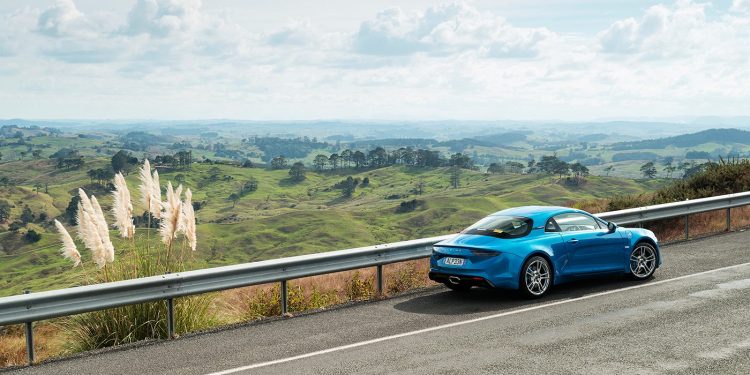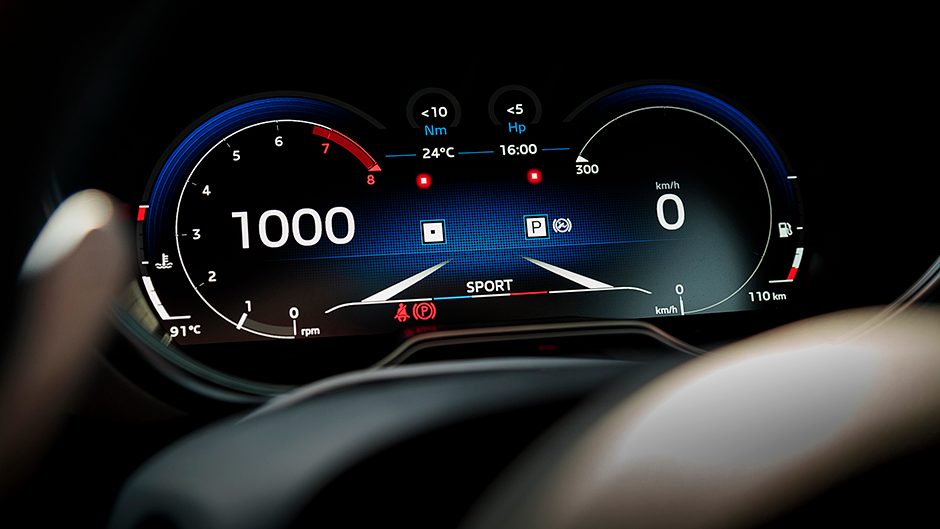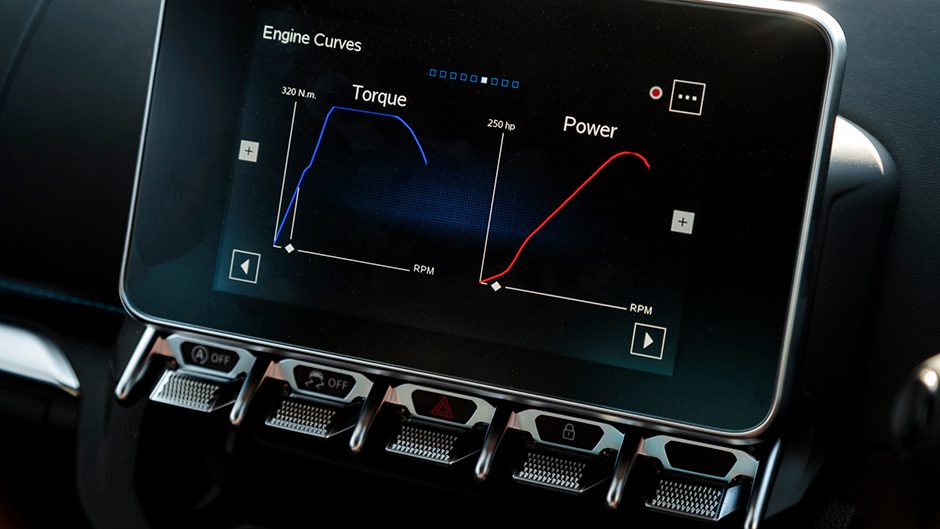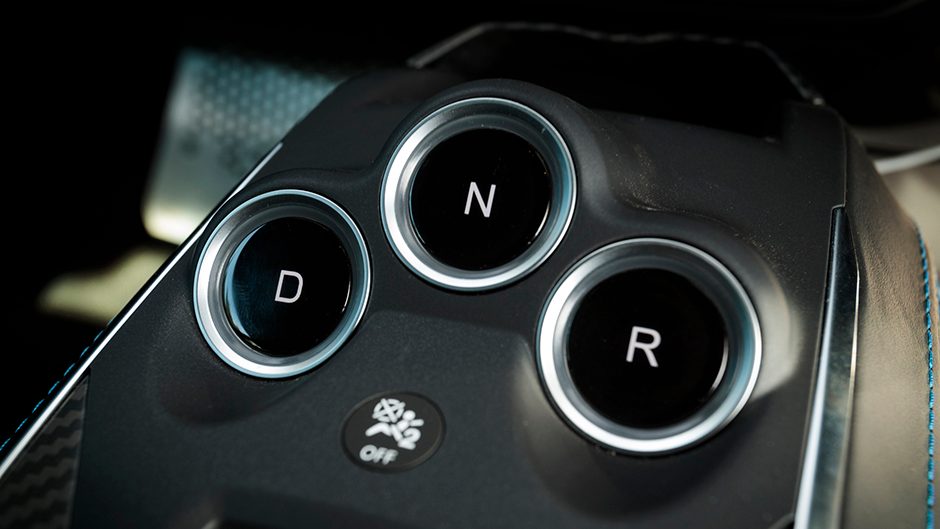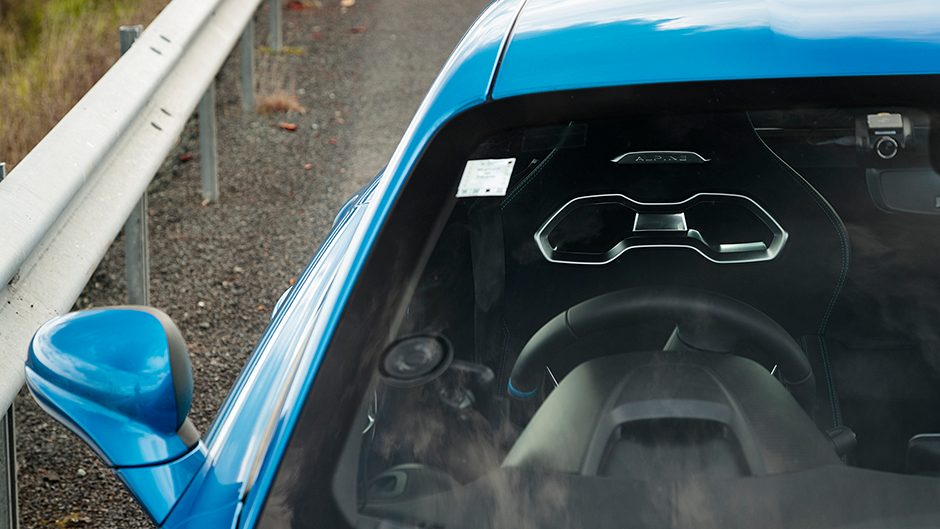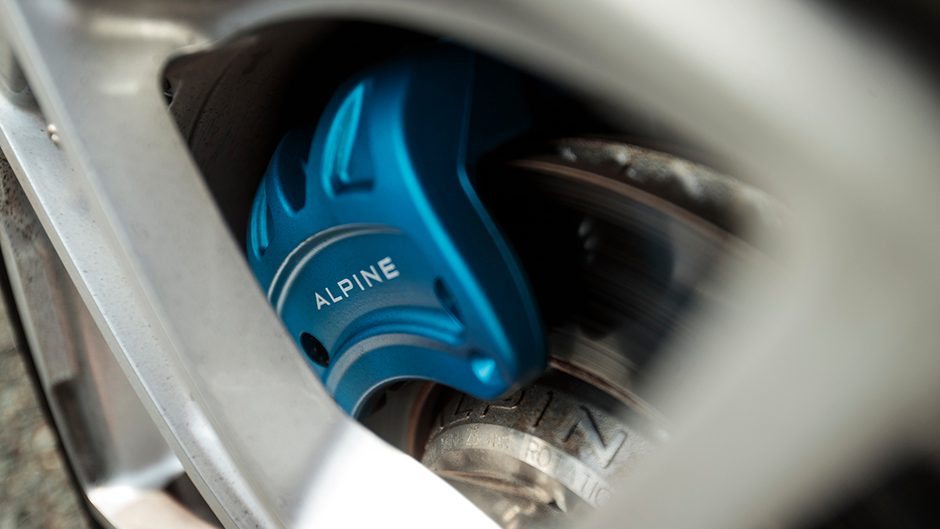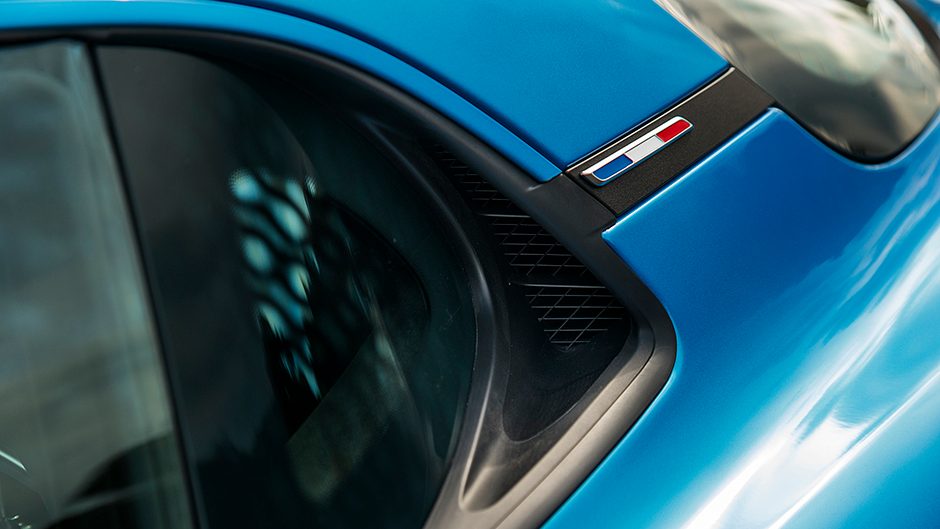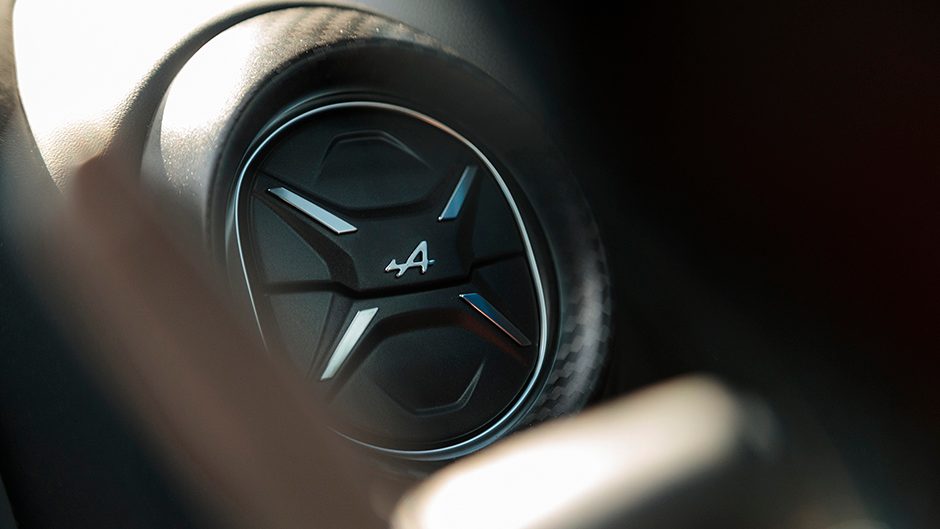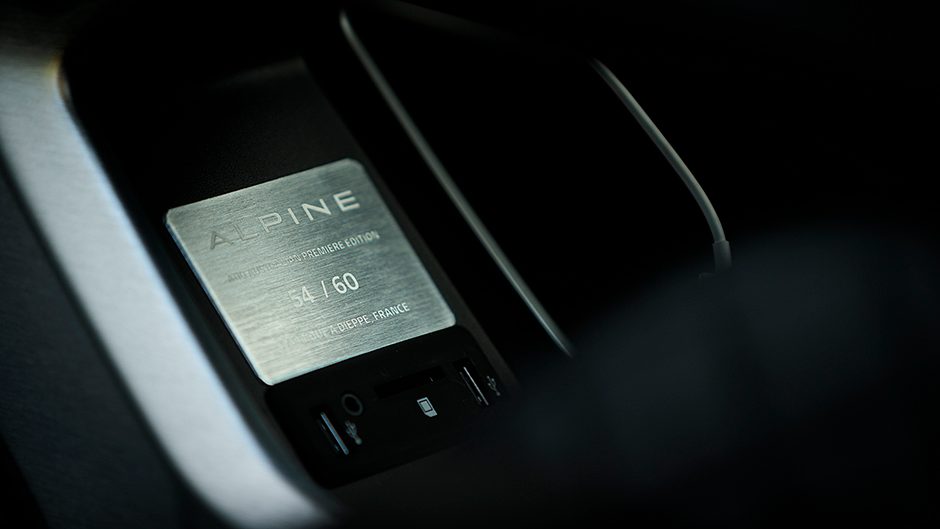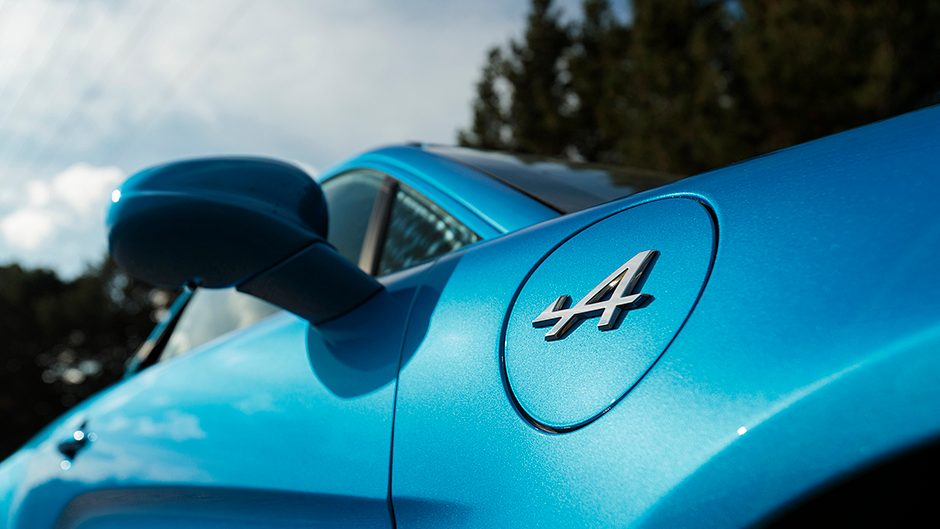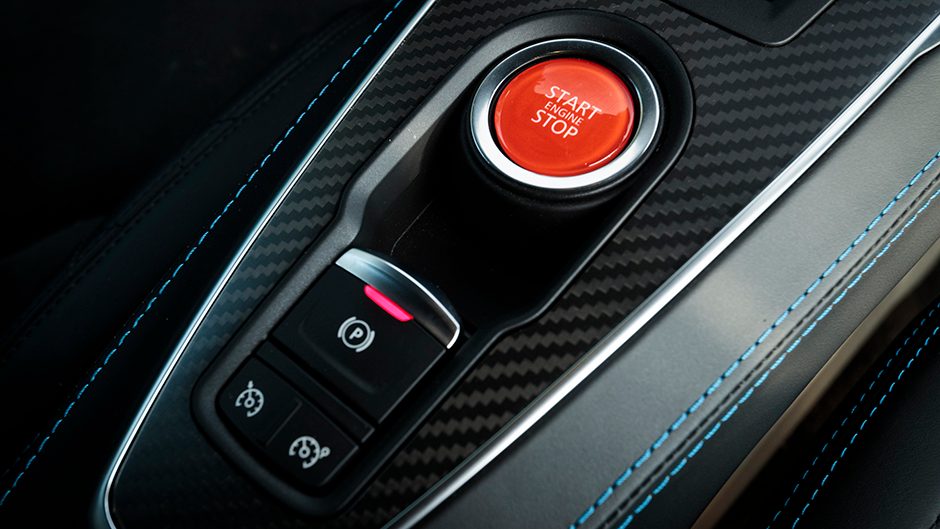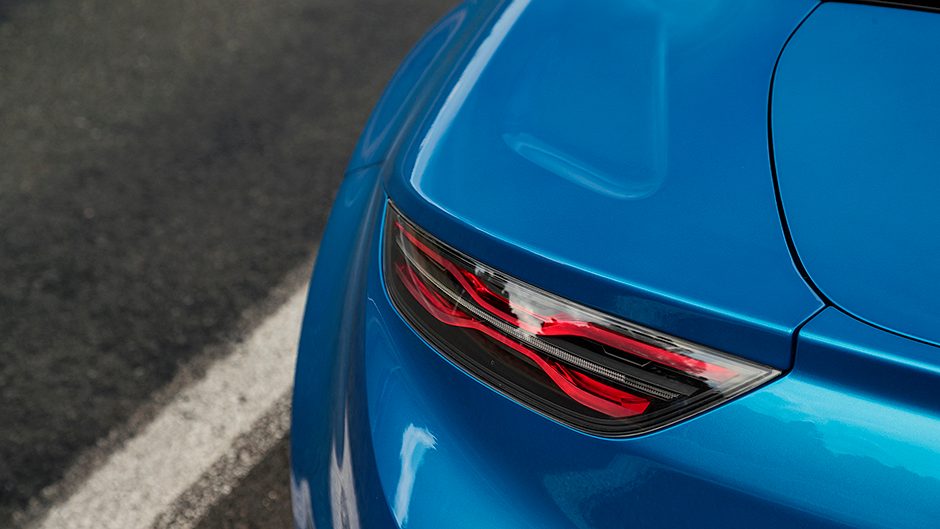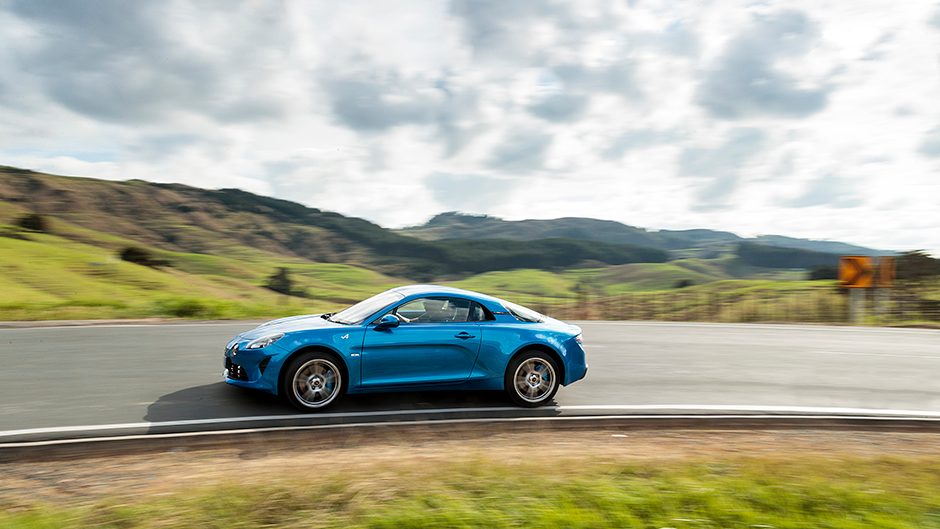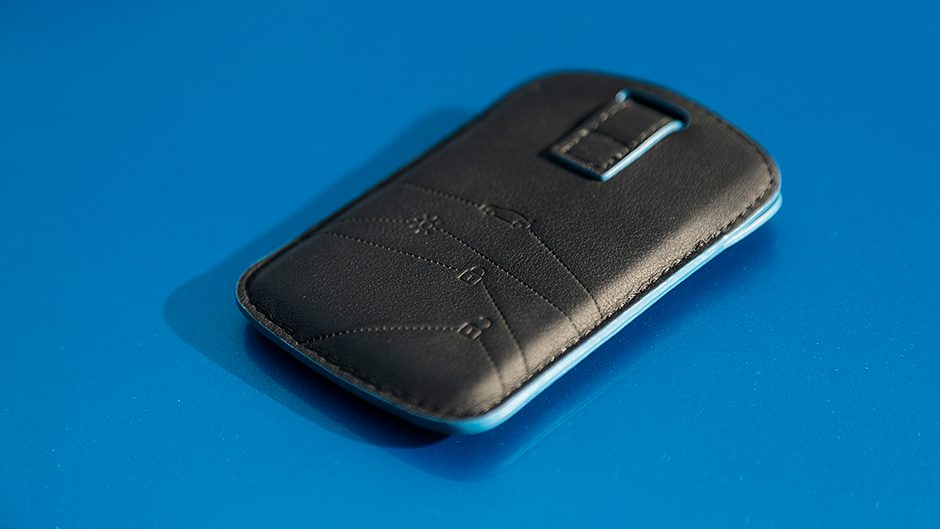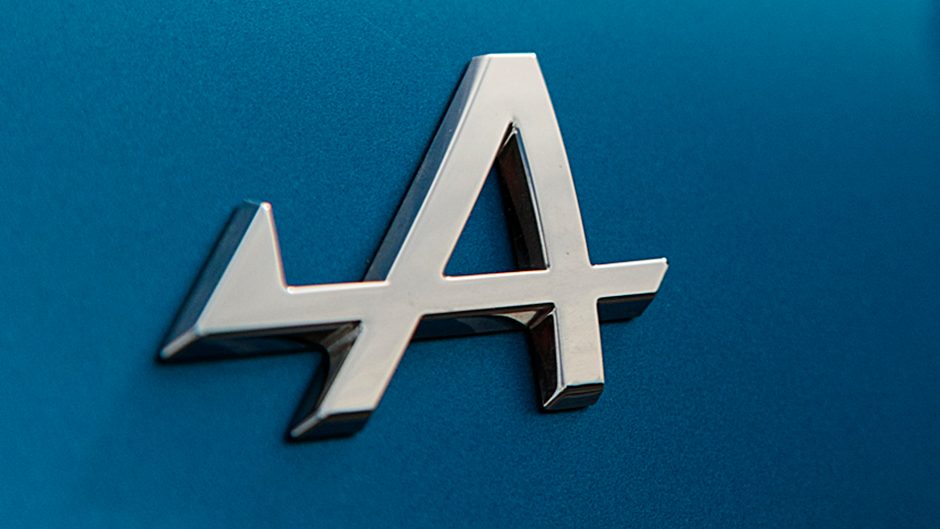2018 Alpine A110 review
Words Kyle Cassidy | Photos Tom Gasnier
Not the climbing but the car, and it’s pronounced ‘l-peen’ for it’s French you know. The proud maker of nimble sports cars is back after a twenty-year absence. We sample a privately imported Alpine A110 and find it magnifique.
Weight really is the enemy of dynamics, and performance for that matter. That becomes clear every time you drive something lightweight and technically simple, like the Alpine A110 for instance. This new sportster is on an agility mission, with a focus on mass reduction to deliver nimble and pure handling.
Pure? There are no electronic handling aids required here with the weight low and centralised. It’s an ethos that made the original 1969 Alpine A110 Berlinette such a success, the rear-engined maestro good enough to win the 1973 World Rally Championship. The new one won’t be amassing any world titles but it will surely win over any keen driver. This mid-engined marvel was first conceived as a venture between Caterham and Renault, before financial troubles saw the French take over the project entirely.
It’s built in the original Alpine factory in Dieppe, home for the past few decades to Renault Sport. With driving pleasure at its core, the Alpine has a unique all-alloy chassis, the aluminium body being bonded, riveted and welded. The claimed weight is 1100kg, and this we weighed at 1106kg, with 57 per cent of that mass on the rear axle. It’s a small machine, not quite as diminutive as the original, but still low lying.
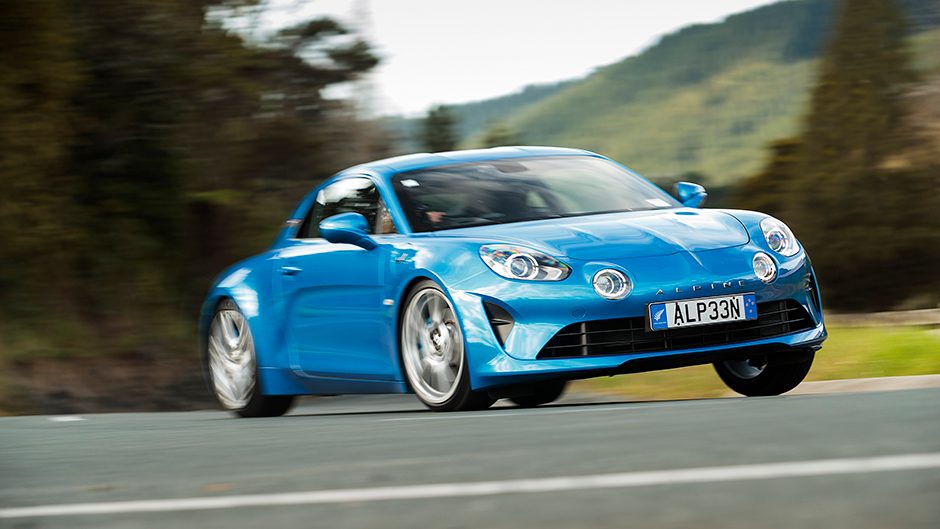
While the effort from almost half a century ago had a longitudinally mounted engine dwelling out past the rear axle, the new one focuses on mass centralisation, the fuel tank behind the front axle, the 1.8-litre four mounted transversely and in front of the rear wheels. That engine is the same as you’ll find in the new Renault Megane RS, but it has an Alpine specific intake, tune, turbocharger and exhaust. Here it delivers 188kW and 320Nm. It teams with a Getrag seven-speed dual-clutch system, the ratios stacked tightly to favour acceleration.
Double wishbones all round suspend the 18-inch forged aluminium wheels, with passive dampers used to reduce weight and complexity and there are hollow anti-roll bars. Another obsessive weight detail; they had Brembo devise a rear caliper with an integrated park brake to save 2.5kg. If you can’t recall the original, you’ll wonder about the styling of the modern version, but most elements are there to ape the old one with the quartet of lights up front being the most obvious feature.
But there are a few subtle ones, like the shallow scalloping on top of the rear deck hinting at the cooling ducts of the old rear-engined sportster. There is no need for an unbecoming spoiler here with a flat undertray and functional diffuser taking care of any adverse lift at speed. Electronic bits comprise the ESP, three drive modes (Normal, Sport, Track) and there’s an active sports exhaust which emits more pops and bangs in the Sports modes.
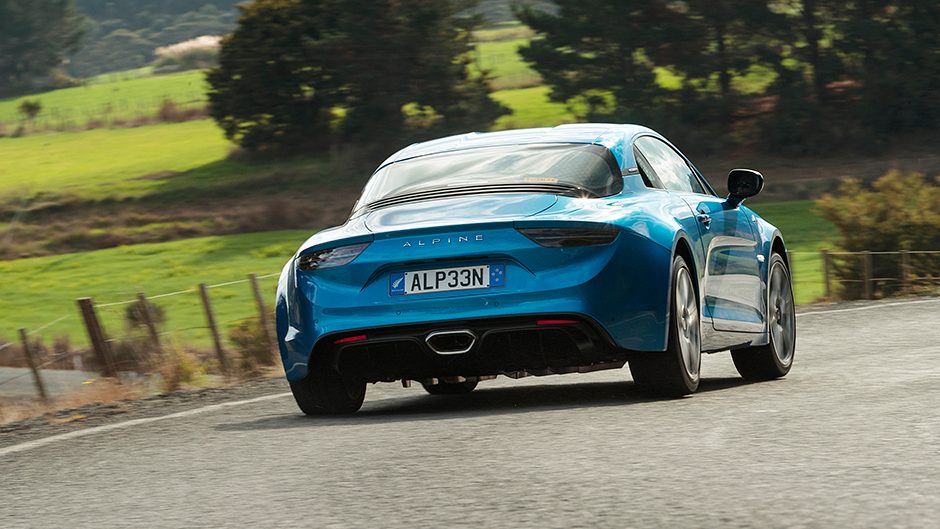
Mid-engined sports cars make few concessions to everyday practicalities, lightweight ones even less. Yet despite the A110’s narrow focus on driving thrills, it doesn’t come at the cost of civility. It’s low slung but easy enough to slide into without a chunky sill to negotiate. The seat is snug but not unforgiving.
These are Sabelt one-piece buckets, weighing 13kg each. They slide but can’t recline, and height adjustment requires tools. But the driving position is sound, pedals out in front, the wheel where you want it and there’s sufficient head room. The rear view through the wraparound rear screen isn’t exactly generous, a shame as there’s no reversing camera. Cabin storage is also missing in action.
But there are two boots, only neither fits much. Flashes of structural aluminium are part of the cabin ambience, while the quilted leather is nice and there are a few other retro design cues in there. But there’s also evidence of Renault parts bin raiding. There are a few French oddities about it, like the locking system; if you use the key fob to lock it, you have to unlock it this way too rather than using the touch pads on the handles. C’est la vie.
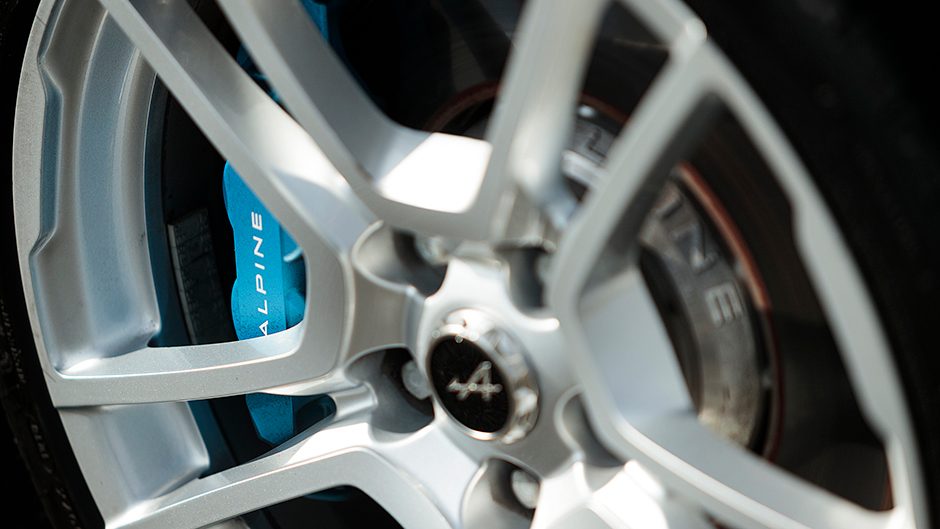
The seven speeder is operated via a dinky arrangement of push buttons; D, N and R, and of course you push and hold N to activate Park. But the gearbox is otherwise as conventional and convenient as any other twin-clutcher, easing driving duties with the usual slickness you’d expect of a hot hatch in traffic. The steering is electrically assisted, lightweight and quick with 2.1 turns between the locks.
The general ride character of this is interesting. At urban speeds it’s sporty but remarkably supple, free of any edginess over the nasties. And it’s a car you can instantly recognise as something special from its lightness and the assertiveness of the controls.
The engine might be shared with the RS but to the ears it’s a different beast altogether. There’s an edge to the induction, more turbo whistle and the exhaust sounds off more liberally. With less weight to move, this feels stronger than the RS, momentum building from 2000rpm, giving it a broad working range as it swings right around to seven.
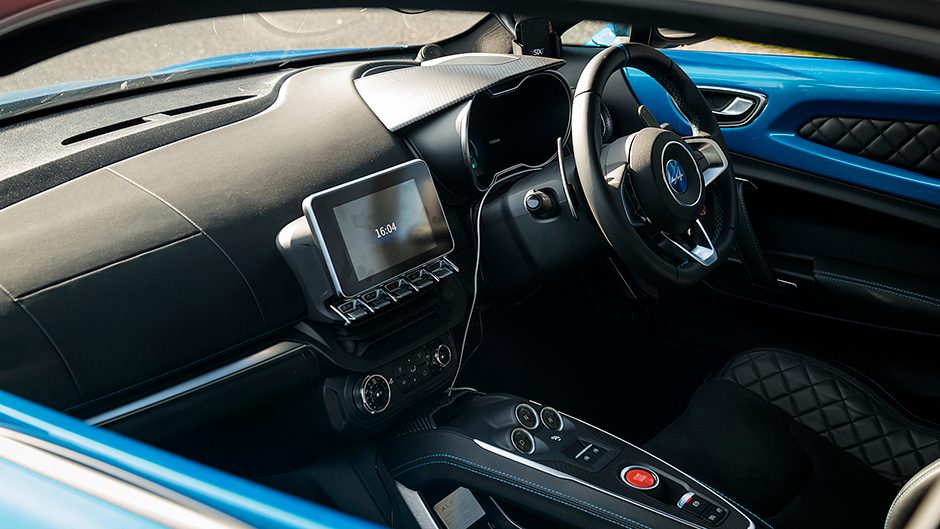
It really hits it straps from 3000rpm, and feels plenty quick enough, as a 2.8sec 80-120km/h (Megane RS 3.2sec) suggests. The well stacked ratios keep it humming too, and with seven of them, it doesn’t run into any holes while steaming strongly to the redline. The auto can be left to it in the Sports modes, though is sometimes a little late with the downshifts into bends, while the swaps themselves are more hot hatch than supercar in terms of rapidness.
But it’s the chassis that stars as it devours turns. Along flowing highway roads the brakes are all but redundant as it slinks along at the legal limit rounding up all manner of curves with disdain. The A110’s gait is intriguing. It rides quite serenely for a low lying mid-engined car on passive dampers. And remarkably, the tyres aren’t shouting at you the whole time.
While it can feel slightly aloof at times, get it into the action and there are few cars that will match its ability to ace both the apexes and the bumps. It’s Lotus-like in that regard.
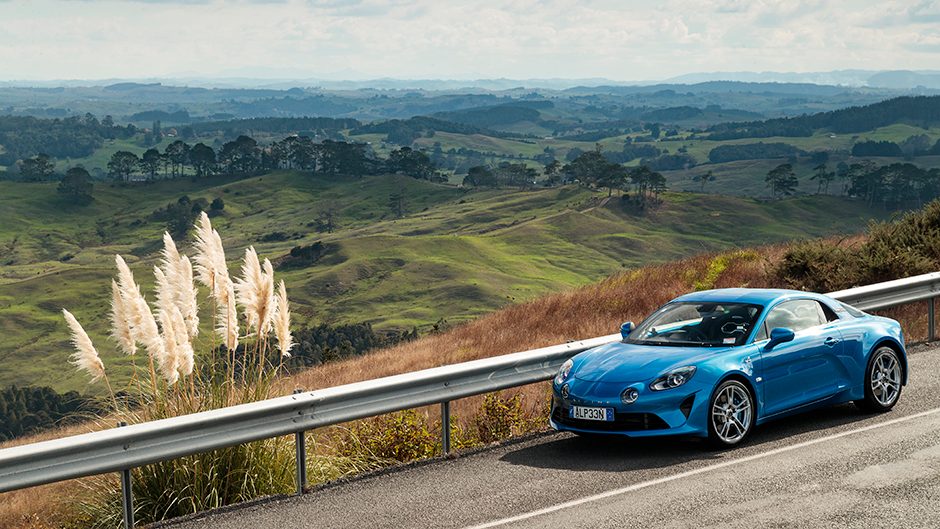
You can quickly dial in to a perfectly blissful flow through twisting tarmac, the Alpine absorbing turns purposefully. We’re loath to describe any aspect of the car’s character as effortless, that makes it sound boring, whereas it’s anything but. You can trust that front end to keep sticking in the trying turns but keep your right foot steady as the rear doesn’t much like a mid-corner lift if you suddenly feel you’ve over committed; just keep calm and carry on.
It’s stable around the longer curves, no short wheelbase, mid-engine nervousness to contend with, while corner exits are sorted with an abundant bite from the rears that encourages an early application of the go pedal. The A110 requires little effort from the helm to tip it precisely into a turn. The assistance is light but consistent while the link to the treads is sufficient rather than buzzing.
We gave the Alpine a decent nudge up a winding hill road littered with tight turns. This was the sole time we went for Track mode in order to neuter the ESP and keep that flow going. Only through these tightening turns did the nose start to push which we discovered could be neutralised with an added dose of throttle, the rearward antics helping balance out the front. So sweet. We flapped away on the paddles, swapping repeatedly between second and third gear, and were surprised with how quickly it could gobble up lesser straights, given the short nature of the gearing.
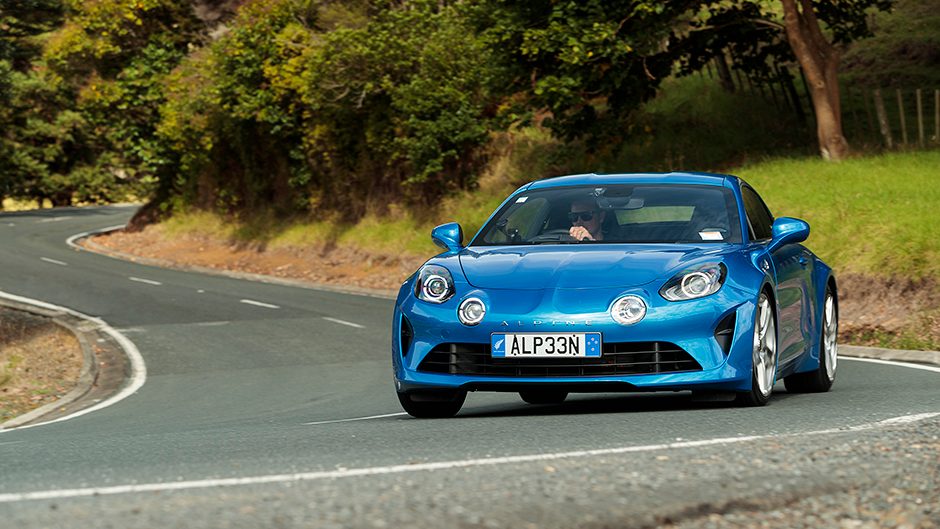
Lucky there’s an audible shift indicator. The brakes impress with a pedal that’s not too snatchy but bites hard when pressed, and the car being so light the stoppers brush off speed quickly. It rounds out a thoroughly impressive driver’s car. At present there is no immediate plan for Alpine to come here. We’d imagine it’d be a big investment to establish a distinct retail presence and servicing for what would be a small opportunity.
This car was sourced from Australia and privately imported. The specification is what’s known as the Australian Premier Edition, aping the 1955 Premier examples that were first made available in LHD and UK and Japanese markets.
There were 60 of these Aussie cars, the owner choosing number 54 for his, the year of his birth. That sees it wearing Otto Fuch forged alloys, the lightweight Sabelt seats, the sports exhaust and big brake set-up, all as standard.
The list in Australia for the Premier is $106,500, while the other two models include the Pure at $97,000 and the Legende which offers a touring-type package with electric, heated seats and the like for $103,500.
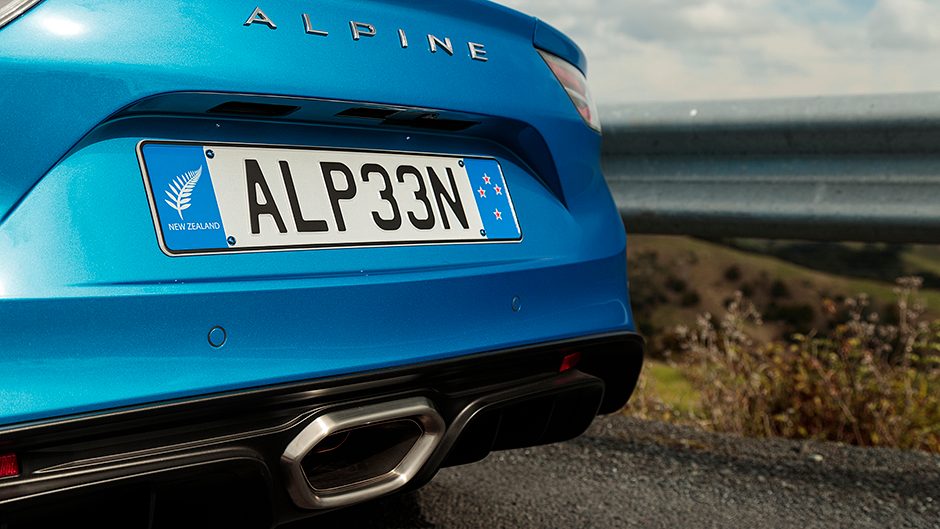
| Model | Alpine A110 | Price | TBA |
| Engine | 1798cc, IL4, T/DI, 185kW/320Nm | Drivetrain | 7-speed twin-clutch, rear-wheel drive |
| Fuel Use | 6.1L/100km | C02 Output | 138g/km |
| 0-100km/h | 4.85sec | Weight | 1106kg |


